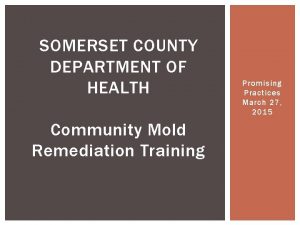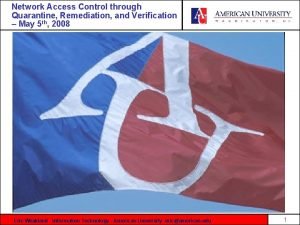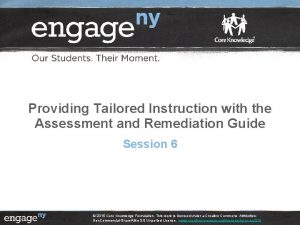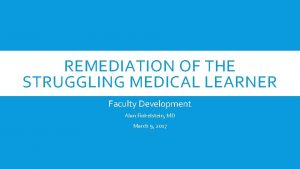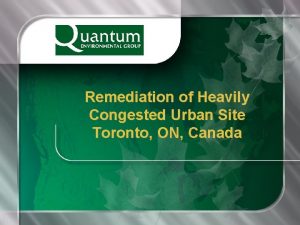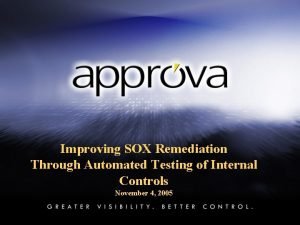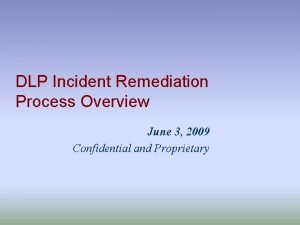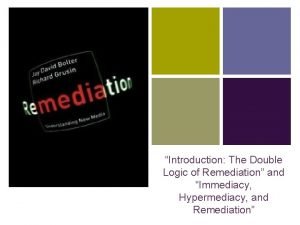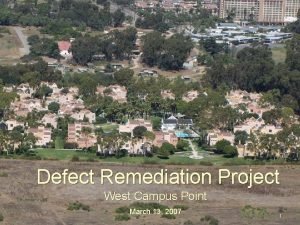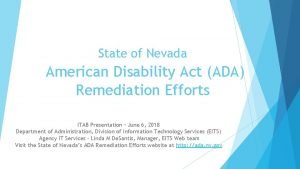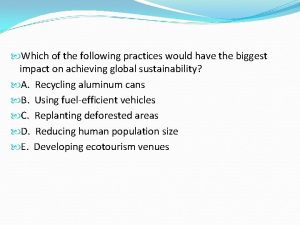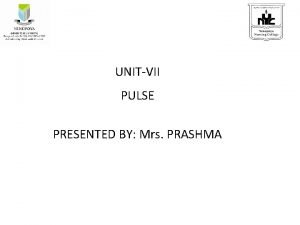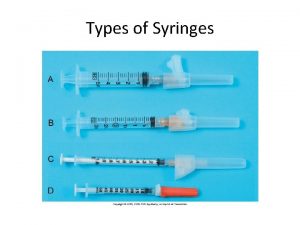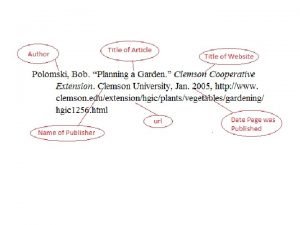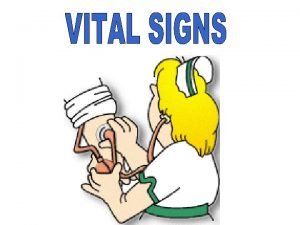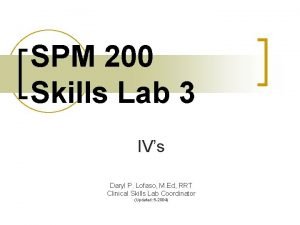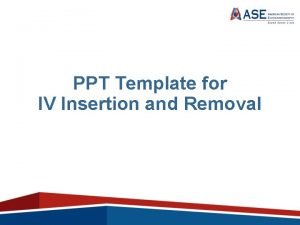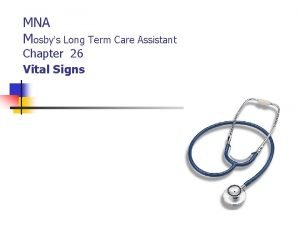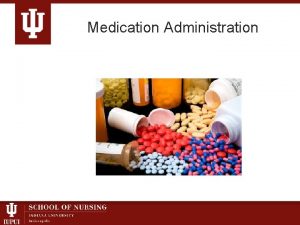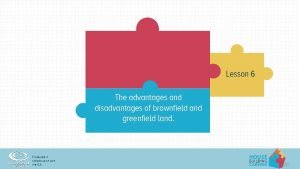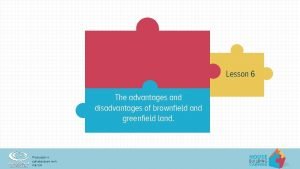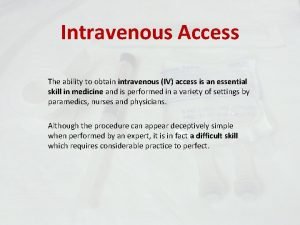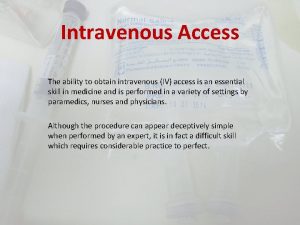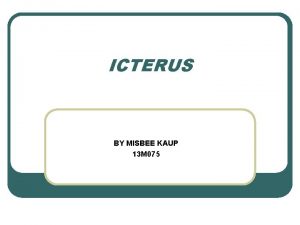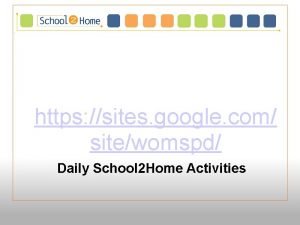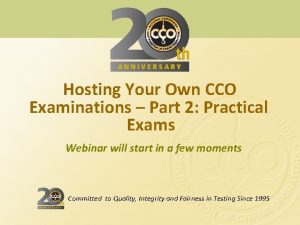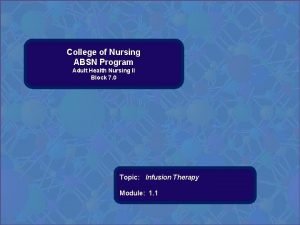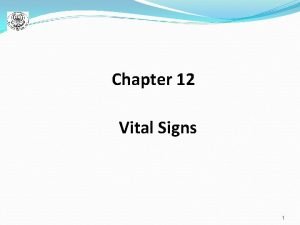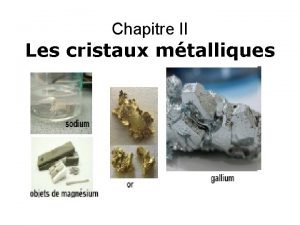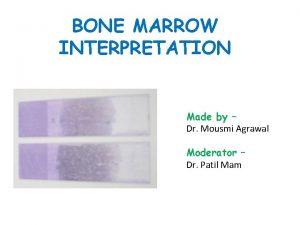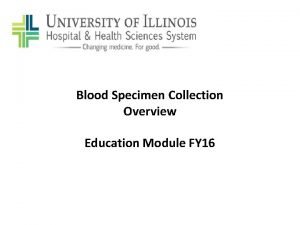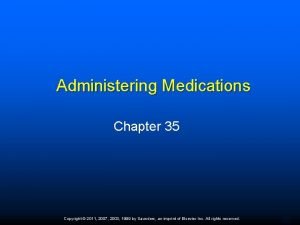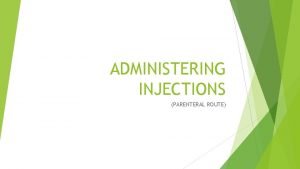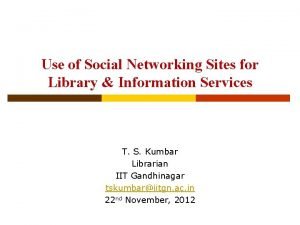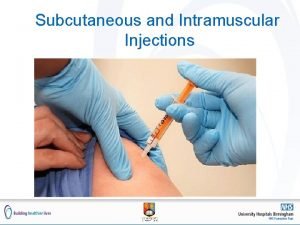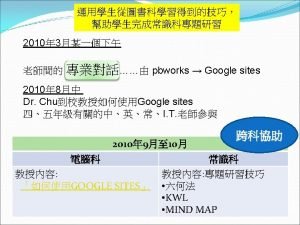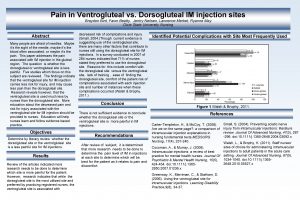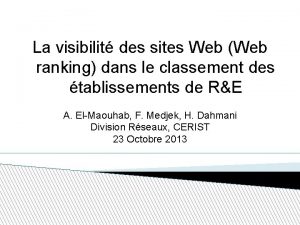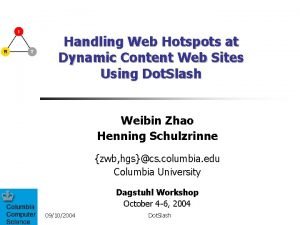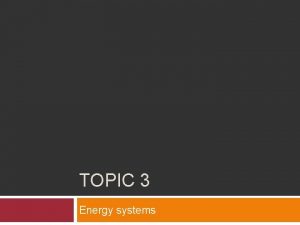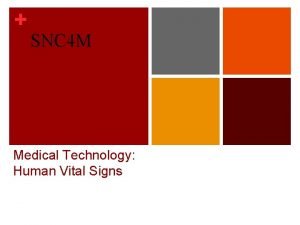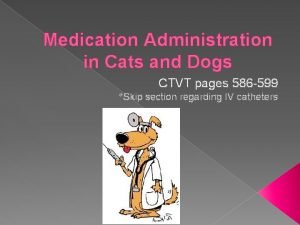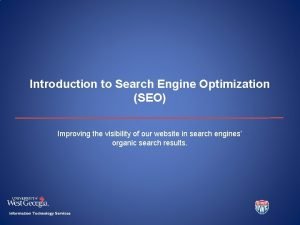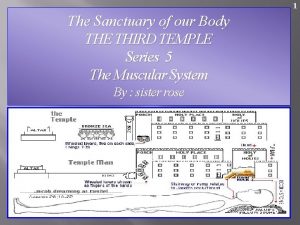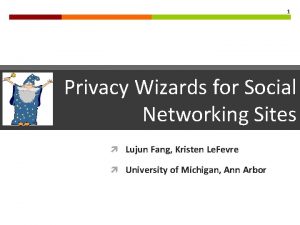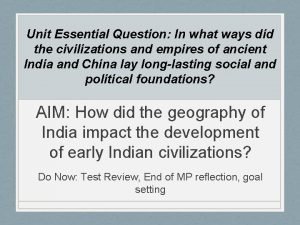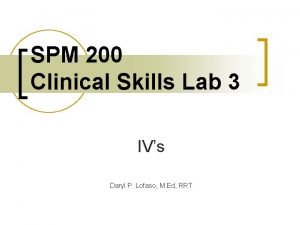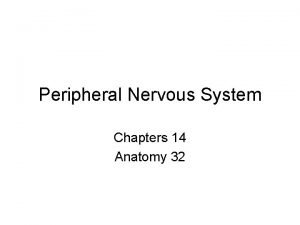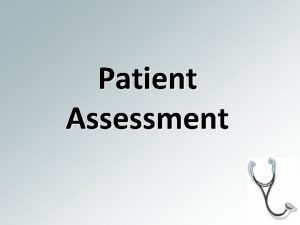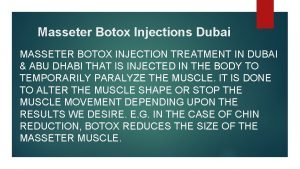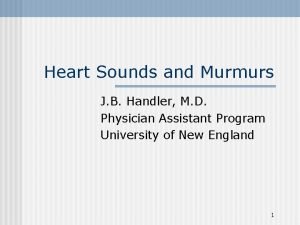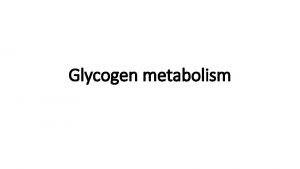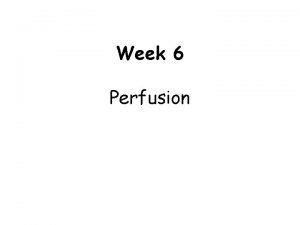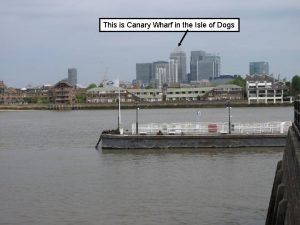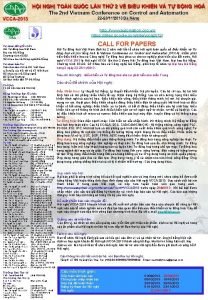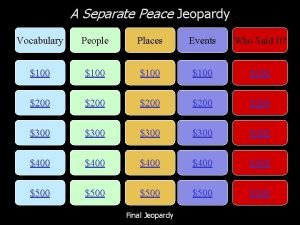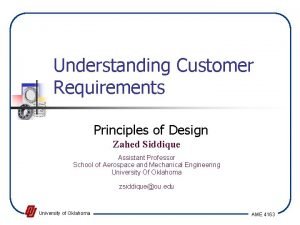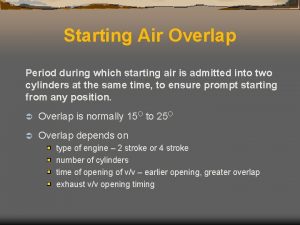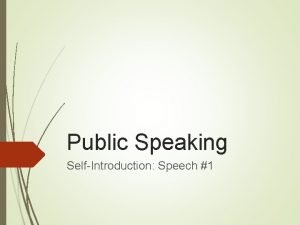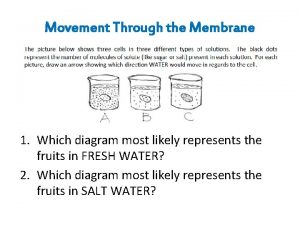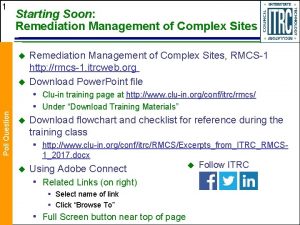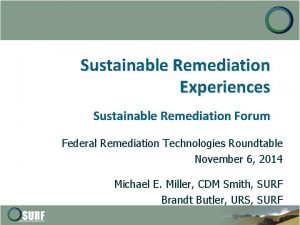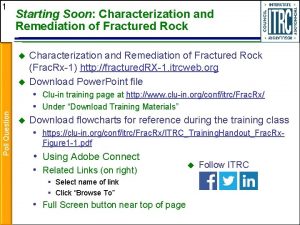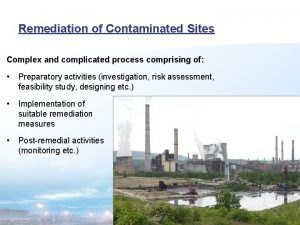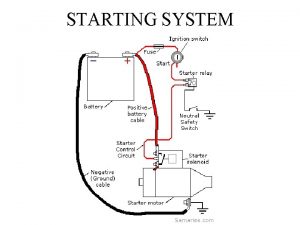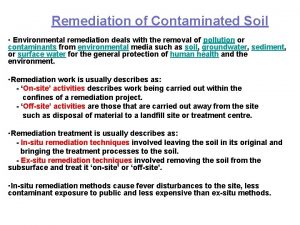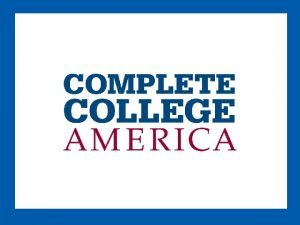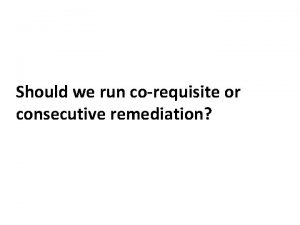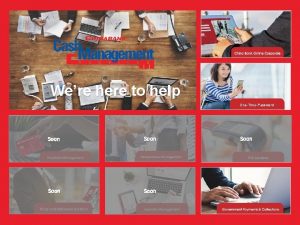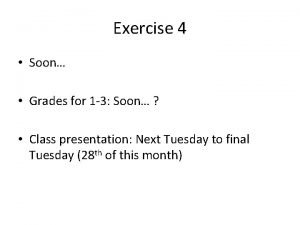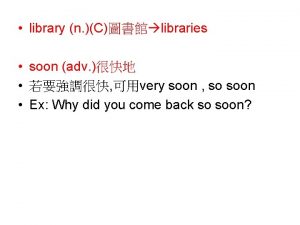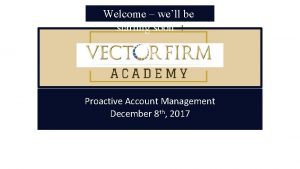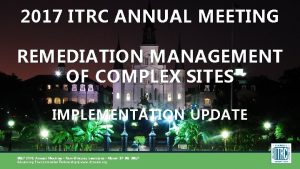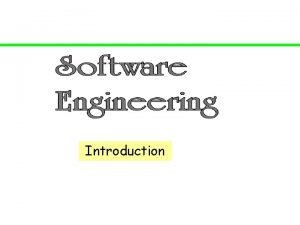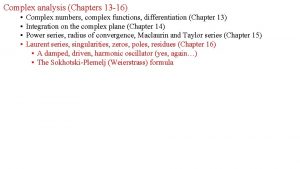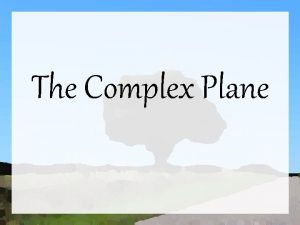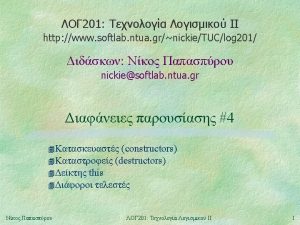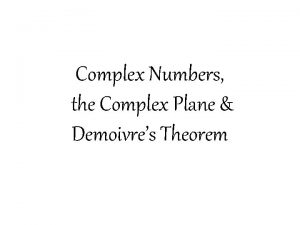1 Starting Soon Remediation Management of Complex Sites
































































































- Slides: 96

1 Starting Soon: Remediation Management of Complex Sites u Poll Question u u Remediation Management of Complex Sites, RMCS-1 http: //rmcs-1. itrcweb. org Download Power. Point file • CLU-IN training page at http: //www. clu-in. org/conf/itrc/rmcs/ • Under “Download Training Materials” Download flowchart and checklist for reference during the training class • http: //www. clu-in. org/conf/itrc/RMCS/Excerpts_from_ITRC_RMCS 1_2017. docx u Using Adobe Connect • Related Links (on right) § Select name of link § Click “Browse To” • Full Screen button near top of page u Follow ITRC

Welcome – Thanks for Joining this ITRC Training Class Remediation Management of Complex Sites (RMCS-1) ITRC Technical and Regulatory Guidance document Sponsored by: Interstate Technology and Regulatory Council (www. itrcweb. org) Hosted by: USEPA Clean Up Information Network (www. cluin. org)

3 Housekeeping Course time is 2¼ hours u This event is being recorded u Trainers control slides • Want to control your u own slides? You can download presentation file on Clu-in training page u Questions and feedback • Throughout training: type in the “Q & A” box • At Q&A breaks: unmute your phone with #6 to ask out loud • At end of class: Feedback form available from last slide § Need confirmation of your participation today? Fill out the feedback form and check box for confirmation email and certificate Copyright 2019 Interstate Technology & Regulatory Council

4 ITRC (www. itrcweb. org) – Shaping the Future of Regulatory Acceptance u u u Host organization Network • State regulators Disclaimer • Full version in “Notes” section • Partially funded by the U. S. government § All 50 states, PR, DC § ITRC nor US government • Federal partners warranty material § ITRC nor US government DOE DOD • ITRC Industry Affiliates Program • Academia • Community stakeholders u Follow ITRC endorse specific products EPA u ITRC materials available for your use – see usage policy u Available from www. itrcweb. org • Technical and regulatory guidance documents • Online and classroom training schedule • More…

5 Meet the ITRC Trainers Susan Newton Elisabeth Hawley CO DPHE Richland, WA 303 -692 -3321 Geosyntec Consultants 510 -289 -0521 ehawley@geosyntec. com susan. newton@state. co. us David Alden Tersus Environmental Wake Forest, NC 919 -523 -6233 david. alden@tersusenv. com Sam Brock Retired - AFCEC San Antonio, TX 210 -602 -4650 Sam. brock 7@icloud. com Chuck Newell GSI Environmental Inc. Houston, TX 713 -522 -6300 cjnewell@gsi-net. com Read trainer bios at https: //cluin. org/conf/itrc/rmcs/

6 The Challenge – Meeting Site Objectives at Complex Sites u Complete remediation (no use restrictions) is a significant challenge at complex sites u ITRC team definition of a complex site: • Remediation progress is uncertain and remediation may not achieve closure or even longterm management within a reasonable time frame • “Reasonable time frame” for restoring resources to beneficial use is subject to interpretation and depends on site circumstances ITRC RMCS-1 Executive Summary

7 The Challenge – Meeting Site Objectives at Complex Sites Aerial view of the Rocky Flats Site, Colorado ITRC RMCS-1 Figure 15 (DOE 2017) Delineating TCE plume in a residential area near Middlefield-Ellis-Whisman (MEW) Site, California ITRC RMCS-1 Figure 12 (CPEO 2016 b)

8 Complex Sites Nationwide National Research Council reported contaminant levels at 126, 000 sites inhibit site closure u Roughly 10% are “complex” u Cost to complete = $127 billion u Clear need for additional guidance u National Research Council, 2013

9 ITRC Guidance for Complex Sites u Recommended process for complex sites • Adaptive site management u Consolidates existing guidance, best practices, tools, and technologies u 16 case studies - realworld applications ITRC Technical and Regulatory Guidance Remediation Management of Complex Sites RMCS-1 http: //rmcs-1. itrcweb. org

10 Adaptive Site Management Comprehensive, Flexible, and Iterative Chapter 2. Site Challenges Chapter 3. Remediation Potential Assessment Chapter 4. Adaptive Remedy Selection Chapter 5. Long-Term Management ITRC RMCS-1 Chapter 1, Figure 1 See Training Handout

11 Benefits of Adaptive Site Management Maintain protection of human health and the environment and fulfill regulatory obligations u Base decisions on robust conceptual site models u Streamline decision making and save costs u Demonstrate interim progress that leads to longterm results u Reduce barriers to using available remedial approaches u Return sites to beneficial reuse u

12 Case Study: Naval Air Station Jacksonville, Florida, Operable Unit 3 u Used adaptive site management • Discontinued interim remedial actions • Refined conceptual site model • Determined key exposure pathways • Adopted a risk-based remedial approach u Several pilot studies, innovative tools and technologies ITRC RMCS-1, Figure 28

13 Key to Your Success Engage Stakeholders include citizen and Tribal communities, environmental advocacy members, and members of the affected public u Methods for stakeholder involvement u • Existing cleanup program processes § Restoration Advisory Board/stakeholder meetings § Public outreach and community meetings • Planning process • Adaptive site management ITRC RMCS-1, Chapter 7

14 Case Study: Stakeholder Involvement at Middlefield-Ellis-Whisman Site Community members are constructive partners in decisionmaking u Model permit process for cooperation between regulators and local land use planning jurisdictions u Vapor intrusion study area at Middlefield. Ellis-Whisman (MEW) site, California ITRC RMCS-1, Figure 10, CPEO 2016 a

15 After Today’s Training We Expect You Will Be Able To: u Identify and integrate technical and nontechnical site challenges presented by complex sites u Use the Remediation Potential Assessment u Apply adaptive site management principles u Develop a long-term performance-based action plan u Effectively engage stakeholders u Access additional resources u Communicate the value of this guidance

16 Today’s Road Map u Site challenges u Remediation u Questions u Adaptive Potential Assessment and answers remedy selection u Long-term management u Preparing you to take action u Questions and answers

17 Site Challenges Learning Objective Chapter 2. Site Challenges Identify and integrate technical and nontechnical site challenges into a holistic approach to remediation Chapter 3. Remediation Potential Assessment Chapter 4. Adaptive Remedy Selection Chapter 5. Long-Term Management ITRC RMCS-1, Figure 1 See Training Handout

18 Complex Site? ITRC RMCS-1, Figure 37, modified from Kansas Geological Survey, 2001

19 Description of a Complex Site Poll Question u At “complex sites”, remediation progress is uncertain and remediation is not anticipated to achieve closure or even long-term management within a reasonable time frame u Both technical and non-technical challenges can impede remediation u Identifying challenges can improve the conceptual site model (CSM) and maximize remedial effectiveness ITRC RMCS-1 Executive Summary, Chapter 2

20 ITRC Survey Results: Diversity of Responses – Remedial Time Frame >10 years, 11% Remedial time frame does not determine site complexity, 47% >30 years, 28% >60 years, 6% >100 years, 14% ITRC RMCS-1, Table 1

21 Identify Site Challenges Technical Examples u u u Geologic Hydrogeologic Geochemical Contaminant-related Large-scale Non-Technical Examples u u u Site objectives Changes over long time frames Regulatory Institutional controls Land use Funding

22 Identify Technical Challenges Geologic Conditions u Geologic 10 m heterogeneity/ preferential flow paths u Fractured bedrock u Karst bedrock 250 m u Low-permeability Clay units (dark colored) dip from upper left media to lower right, an example of stratigraphic heterogeneity Photo courtesy of Hubbard 2015 ITRC RMCS-1 Table 2

23 Identify Technical Challenges Hydrogeologic Conditions u Extreme or variable groundwater velocities u Fluctuating water table u Deep contamination u Surface water and groundwater interactions and impacted sediment Surface water/groundwater interactions downgradient of F-Area, Savannah River Site, South Carolina

24 Identify Technical Challenges Geochemical Conditions u Extreme geochemistry • Alkalinity, p. H, redox conditions, salinity, ionic strength, hardness u Extreme groundwater temperatures • Geothermal sources • Low temperatures, permafrost ITRC RMCS-1, Table 2 Low temperatures decrease biological activity at North Slope Refinery, Alaska, Redbullet 16 / Wikimedia Commons

25 Identify Technical Challenges Contaminant-Related Conditions u u Light or dense nonaqueous phase liquids (LNAPL or DNAPL) Recalcitrant contaminants High concentrations or multiple contaminants Emerging contaminants ITRC RMCS-1, Table 2; ITRC ISC-1 2015; ITRC IDSS-1 2015; ITRC Fractured Rock and PFAS Team Fact Sheets, 2017

26 Identify Technical Challenges Large-Scale Sites u Location and extent of contamination u Depth of contamination u Number, type and proximity of receptors u Extensive or comingled plumes ITRC RMCS-1, Table 2 and Figure 37, modified from Kansas Geological Survey, 2001

27 Technical Challenges Case Study: UGI Columbia Gas Site, Pennsylvania UGI Columbia Gas Plant Su squ eh an na R ive u Residual tar in river sediments, groundwater and deep in fractured bedrock u Tar r Google Maps 2017 will slowly dissolve over centuries

28 Identify Non-Technical Challenges u Site objectives u Regulatory • Changing site • Federal and state objectives • Societal expectations • Green and sustainable remediation cooperation • Changing laws and regulation • Orphan sites • Contaminants without regulatory guidance/criteria u Managing changes over long time frames • Phased remediation • Future use • Site management ITRC RMCS-1, Table 3; ITRC GSR-2

29 Identify Non-Technical Challenges u Institutional controls • Tracking and managing • Enforcing • Long-term management u Land use • Changing land, water use • Multiple owners • Site access u Funding • Lack of funds, political influence on program funding ITRC RMCS-1, Table 3; ITRC IC-1, 2016 Deer graze on Rocky Flats National Wildlife Refuge in Colorado Footwarrior, Wikimedia Commons

30 Non-Technical Challenges Case Study: Velsicol Site, Michigan u • DNAPL pools 100 Pine River OU 2 feet deep Livestock impacts and community economic hardship u Limited funding prompted stakeholder involvement u Site OU 1 ITRC RMCS-1 Figure 46, Heidlauf 2017 Contaminated city wells and Pine River

31 Conceptual Site Model Maturity CSM Life Cycle Preliminary CSM Site Assessment Baseline CSM Site Investigation and Alternatives Evaluation Characterization CSM Stage Remedy Selection Design CSM Stage Remedy Implementation Remediation / Mitigation CSM Stage Post-Construction Activities Post-Remedy CSM Stage Site Completion USEPA, 2011 a. Environmental cleanup best practices: Effective use of the project life cycle conceptual site model. EPA 542 -F-11 -011. Conceptual Quantitative General Environmental Cleanup Steps

32 Site Challenges Summary u Complex sites typically have multiple challenges u Both technical and non-technical challenges can impede remediation u Identifying them can improve the conceptual site model and maximize remedial effectiveness

33 Today’s Road Map u Introduction u Site challenges u Remediation u Questions u Adaptive Potential Assessment and answers remedy selection u Long-term management u Preparing you to take action u Questions and answers

34 Remediation Potential Assessment Learning Objective Chapter 2. Site Challenges Chapter 3. Remediation Potential Assessment Use the Remediation Potential Assessment to identify whether Adaptive Site Management is warranted due to site challenges Chapter 4. Adaptive Remedy Selection Chapter 5. Long-Term Management ITRC RMCS-1, Figure 1 See Training Handout

35 Remediation Potential Assessment Process and Outcome Process u u u Screening tool uses weight-of-evidence approach to assess if site is likely to achieve remedial objectives in a reasonable time frame Basis for aligning expectations with actual remediation potential Promotes effective and transparent interaction ITRC RMCS-1, Figure 1 Outcome u u Site objectives are attainable OR Remediation potential is low – consider adaptive site management

36 “Can You Get There? ” u u u Small, shallow site Sandy water bearing unit Low concentrations Benzene (attenuates fast) Very little non-aqueous phase liquid Source: Dan. TD / Wikimedia Commons

37 “Can You Get There? ” u u u Small, shallow site Sandy water bearing unit Low concentrations BTEX (attenuates fast) Very little NAPL Sources: Dan. TD / Wikimedia Commons, GSI Environmental u u u Large site, deep contamination Much of source under buildings Sand, silt, fractured clays Not much biodegradation Need > 99. 9% reduction

38 Remediation Potential Assessment Purpose u Intended to inform the remedial decision process and determine if adaptive management process is beneficial u Can allow for greater transparency and facilitate future reviews of the process u Flexible process that can be modified as appropriate for the site

39 Remediation Potential Assessment (RPA) DOES: u u u Allow flexibility and sitespecific input in an iterative process Require detailed supporting data on the nature and extent of contamination Consider remediation potential of individual factors in context of other pertinent factors DOES NOT: u u Provide a means to avoid requirements Evaluate whether a site is complex Directly consider cost Produce a default decision

40 Remediation Potential Assessment Key Criteria (Pre-Remedy) 8 Questions… 1. How difficult is it to work at the surface of the site? Martin Abegglen / Wikimedia Commons See Figure 12, CPEO, 2016 b ITRC RMCS-1 Figure 12, CPEO, 2016 b

41 Remediation Potential Assessment Key Criteria (Pre-Remedy) 8 Questions… 1. How difficult is it to work at the surface of the site? x Laurent Deschodt / Wikimedia Commons 2. How difficult is it to drill at the site? x Wilson 44691 / Wikimedia Commons

42 Remediation Potential Assessment Key Criteria (Pre-Remedy) 3. What is the scale of the source zone or plume?

43 Remediation Potential Assessment Key Criteria (Pre-Remedy) 3. What is the scale of the source zone or plume? 90% ? 4. What contaminant concentration reduction is needed? 99% ? 99. 99% ?

44 Remediation Potential Assessment Key Criteria (Pre-Remedy) 3. What is the scale of the source zone or plume? 4. What contaminant concentration reduction is needed? 5. Do the key site constituents readily attenuate relative to the travel time to receptors? Sources: Dschanz / Wikimedia Commons; Public Domain

45 Remediation Potential Assessment Key Criteria (Pre-Remedy) 3. What is the scale of the source zone or plume? 4. What contaminant concentration reduction is needed? Al Silonov / Wikimedia Commons 5. Do the key site constituents readily attenuate relative to the travel time to receptors? 6. Does difficult-to-remove mass exist at the site? L. Donor. , T. Sale, CSU

46 Case Study: Paducah Gaseous Diffusion Plant, Kentucky Surface Access Clay/Silt Drilling Difficulty Difficult to Remove Mass Sand Concentration Reduction Gravel Scale of Source and/or Plume ITRC RMCS-1, Figure 43 (DOE 2010 a) Sand DNAPL Source Zone Dissolved Plume Attenuation

47 Remediation Potential Assessment Key Criteria (Pre-Remedy) 7. What is the predicted performance for available remedial technologies? 2011 2012 2015

48 Remediation Potential Assessment Key Criteria (Pre-Remedy) 8. What is the predicted time frame for achieving interim and site objectives? Aqueous C/C 0 in % 100 Degradation None Fracture only Fracture & reaction zone in matrix Fracture & in whole matrix NRC, 2013 0 Model/Analysis USEPA REMChlor or REMFuel Model Natural Attenuation Software Matrix diffusion Concentration vs. time First order rate calculations Years 300

49 Remediation Potential Assessment Matrix of Evaluation Criteria u u u Evaluate each criteria as high, moderate or low Weight criteria to reflect relative importance Assess conclusion ITRC RMCS-1, Table 7 Evaluation Criteria Access Drilling feasibility Scale Concentration reduction Attenuation Difficult-toremove mass Technology performance Time frame Total checked: Likelihood of Achieving Remediation Objectives High Moderate Low ✔ ✔ ✔ ✔ 4 2 2

50 Remediation Potential Assessment Matrix of Evaluation Criteria u u u Evaluate each criteria as high, moderate or low Weight criteria to reflect relative importance Assess conclusion ITRC RMCS-1, Table 7 Evaluation Criteria Access Drilling feasibility Scale Concentration reduction Attenuation Difficult-toremove mass Technology performance Time frame Total checked: Likelihood of Achieving Remediation Objectives High Moderate Low ✔ ✔ ✔ ✔ 1 3 ✔ 4

51 Remediation Potential Assessment Key Criteria (Post-Remedy) u Has the existing remedy been effectively operated and maintained? u Are aquifer conditions or contaminant sources adequately characterized? Have they changed? u Are concentrations reductions occurring at the rate anticipated? u Does the selected remedy adequately address contaminants and/or hydrogeologic conditions? u Can interim and/or site objectives (and contaminantspecific cleanup levels) be met with other technologies within a reasonable time frame?

52 Remediation Potential Assessment Summary u Screening tool - provides a valuable process; does not produce a default decision u You answer eight technical questions and use Weight-ofevidence to assess if site is likely to achieve remediation objectives u Allows flexibility and site-specific input in an iterative process u Goal: Determine if… • Site objectives are likely attainable OR • Remediation potential is low – Adaptive Site Management will be important

53 Q&A Break Chapter 2. Site Challenges Chapter 3. Remediation Potential Assessment Chapter 4. Adaptive Remedy Selection Chapter 5. Long-Term Management Follow ITRC See Training Handout

54 Today’s Road Map u Site challenges u Remediation u Questions u Adaptive Potential Assessment and answers remedy selection u Long-term management u Preparing you to take action u Questions and answers

55 Learning Objective Chapter 2. Site Challenges Chapter 3. Remediation Potential Assessment Chapter 4. Adaptive Remedy Selection Understand apply adaptive site management principles Chapter 5. Long-Term Management ITRC RMCS-1, Figure 1 See Training Handout

56 Adaptive Remedy Selection Poll Question Use Adaptive Site Management? (Remediation Potential Assessment) Yes Refine Conceptual Site Model Set or Revisit Site Objectives Develop Interim Objectives and Adaptive Remedial Strategy ITRC RMCS-1, Figure 1 See Training Handout

57 Refine Conceptual Site Model u Prior to revisiting remedy • Are site challenges described? • What inhibited remediation progress? • What are data gaps? u Tools for remedy evaluation ITRC RMCS-1, Appendix B ITRC ISC-1 2015 http: //www. itrcweb. org/DNAPL-ISC_tools-selection/

58 Conceptual Site Model Australia Case Study Phase Permeability/ Transmissivity Source Low High Proximal Plume Distal Plume Low High NA NA Soil vapor DNAPL Groundwater Sorbed LEGEND Equivalent aqueous concentration (mg/L) HIGH (>1, 000) MODERATE/HIGH (100 -1, 000) MODERATE (10 -100) LOW (1 -10) NOT APPLICABLE (NA) 20 -Compartment model summarizing the conceptual site model of contaminant mass at the site. ITRC RMCS-1, Figure 69 and Appendix B

59 Set or Revisit Site Objectives u u Site objectives are overall remedial expectations, including protecting public health and the environment Set site objectives • Consider complexities • Consider different geologic or operable units, source area and plume -- “site segments” u Revisit site objectives • If progress is insufficient despite optimization ITRC RMCS-1, Figure 1 Refine Conceptual Site Model Set or Revisit Site Objectives Develop Interim Objectives and Adaptive Remedial Strategy

60 Site Objectives at Complex CERCLA Sites u Poll Question u Protect human health and environment Meet Applicable or Relevant and Appropriate Requirements (ARARs) or criteria for ARAR waiver • Inconsistent application • • • of state standards Fund balancing Equivalent performance Interim measures Greater risk Technical impracticability (TI) CERCLA - Comprehensive Environmental Response, Compensation and Liability Act TI waiver at Tri-State Mining District (Oklahoma, Kansas, Missouri) ITRC RMCS-1 Chapter 4, 40 CFR 300. 430(f)(1)(ii)(C), USEPA 1993, 2012

61 Case Study: ARAR Waiver at a Wood Treatment Facility, Oroville, California u Complexities • Recalcitrant creosote and pentachlorophenol DNAPL • Drinking water aquifer u TI zone Record of Decision amendment included TI waiver • Groundwater goal within 4 acre area is containment, not restoration ITRC RMCS-1 Figure 7, USEPA 2013 a TI zone at the Koppers Oroville, California wood treatment facility

62 CERCLA Sites Alternate Concentration Limits u Alternate concentration limits can be used in groundwater only if • Groundwater discharges to surface water • No statistically significant increase in concentrations downstream • No exposure to off-site contaminated groundwater prior to discharge u No recent case studies identified Image from U. S. Geological Survey CERCLA Section 121(d)(2)(B)(ii), USEPA, 2005 b

63 RCRA and Other State Programs ITRC Survey u Team surveyed states about their approaches • RCRA, Brownfields, Underground Storage Tank programs • Responses from 40 states u Does your state allow the following to meet site objectives… • …as a primary means? • …after the original selected remedy fails to reach site objectives within the planned remedial time frame? ITRC RMCS-1 Figures 3 -4, Appendix A RCRA – Resource Conservation and Recovery Act (for hazardous waste management)

Number of states responding yes to survey 30 20 10 0 ITRC RMCS-1 Figures 3 -4, Appendix A 20 Low-threat closure criteria State TI provisions Alternate concentration limits Designated points of compliance 38 Institutional controls to manage exposure 40 Risk-based (site-specific) criteria 64 RCRA and Other State Programs 36 34 23 19

65 Develop Interim Objectives and Adaptive Remedial Strategy Poll Question u Interim objectives are intermediary goals that guide progress towards achieving site objectives u Adaptive remedial strategy is a combination of technologies and approaches to meet interim objectives ITRC RMCS-1, Figure 1 Refine Conceptual Site Model Set or Revisit Site Objectives Develop Interim Objectives and Adaptive Remedial Strategy

66 Interim Objectives u Should be Specific Measurable Attainable Relevant and Timebound (SMART) • Contaminant mass flux or discharge decrease by [x]% within [#] years • Target degradation rates met within [#] years • Capping to prevent direct exposure u Guide short-term decisions and actions • Optimization • Technology transitions u Meeting interim objectives progress ITRC IDSS-1, 2011; ITRC MASSFLUX-1, 2010

67 Select Adaptive Remedial Strategy Step 1. Identify Options u u u Biological treatment Chemical treatment Thermal treatment Removal Enhanced extraction Source flux reduction u u u Contaminant mass flux reduction Pump and treat Permeable reactive barriers Enhanced attenuation Monitored natural attenuation u u u Hydraulic containment Passive hydraulic barrier Discharge zone treatment Vapor intrusion mitigation Institutional controls Alternative water supply Options Description and References In situ biological treatment Applying an amendment into the aquifer to bioremediate a targeted volume (ITRC 2002, 2008, Parsons 2004, USEPA 2000, DOE 2002) Source flux reduction Applying remediation or containment to reduce the flux of contaminants moving from the source zone to the plume (ITRC 2008 b, 2010 b, Looney et al. , 2006) Institutional controls Applying administrative restrictions to prevent contaminant exposure or other actions that would negatively impact contamination (USEPA 1997 a, 2009 b, 2010 a, ITRC 2016 b) ITRC RMCS-1 Table 10 for complete listing

68 Select Adaptive Remedial Strategy Step 2. Compare Remedial Approaches u Follow regulatory process • Assess using threshold and balancing criteria for CERCLA, RCRA sites u Additional considerations due to complexities • How does each remedial approach address complexities? 40 CFR 300. 430(e)(9)(iii) CERCLA Nine Criteria Threshold Criteria 1. Overall protection of human health and the environment 2. Compliance with ARARs Balancing Criteria 3. Long-term effectiveness and permanence 4. Reduction of toxicity, mobility or volume 5. Short-term effectiveness 6. Implementability 7. Cost Modifying Criteria 8. State acceptance 9. Community acceptance

69 Select Adaptive Remedial Strategy Step 2. Compare Remedial Approaches u Additional considerations • • • Level of confidence in ability to implement remedy Synergy with other technologies/approaches Adaptability over time Information gained to improve future decisions Robustness of design including interim objectives, metrics, and performance monitoring data • Other ITRC RMCS-1 Appendix B www. clipartpanda. com

70 Select Adaptive Remedial Strategy Step 3. Remedy Selection u Prepare a matrix of site objectives and remedies for each area of the site Site Objectives Objective #1 Objective #2 Objective #3 ITRC RMCS-1, Table 11 Selected Remedy Source Plume Technology 1 Technology 2 Technology 3

71 Case Study: Rocky Mountain Arsenal, Colorado Native vegetation Soil (4 feet) Biota barrier (1. 5 feet) Subgrade ITRC RMCS-1 Figures 26 and 27, CDPHE 2000

72 Rocky Mountain Arsenal, Colorado Remedy Components Site Selected Remedy Objectives On-Site Off-Site Source removal Waste and soil treatment, Off-post groundwater and treatment stabilization intercept and treatment Excavation system Groundwater extraction and treatment Containment Boundary treatment systems Boundary treatment Slurry walls systems Stabilization/capping Protection of Capping National wildlife refuge human health Land use restrictions Deed restrictions and ecology Unexploded ordnance disposal Long-term monitoring Alternate water supply Five-year reviews Trust for potable water supply and distribution Medical monitoring Biomonitoring Trust for long-term O&M

73 Document Remedial Approach Articulate how components work together u For each component of the remedial approach u • Describe technology • State interim objectives • State how the performance will be evaluated (performance metrics) Follow regulatory program requirements for documentation u Can facilitate remedy transitions u H'arnet / Wikimedia Commons

74 Engaging Stakeholders and Tribes Stakeholder and Tribal Perspectives u Stakeholder and Tribal concerns and values u Gathering and organizing information u Creating a forum u Influencing decisions u Advisory boards u Technical assistance ITRC RMCS-1 Chapter 7 Sanjib. Lemar / Wikimedia Commons

75 Engaging Stakeholders and Tribes Responsible Party Perspectives u Seek out community members u Provide them with tools to participate constructively u Build trust for effective outreach u Organize public meetings u Share technical documents, information u Work with media ITRC RMCS-1 Chapter 7 Energy. gov / Wikimedia Commons

76 Summary Adaptive Site Management Principles Refine conceptual site model u Set or revisit site objectives u • Survey highlights flexibility of some state programs in setting or revisiting site objectives u Build adaptive remedial strategy • May need multiple technologies, phases for each site area • Set interim objectives to guide remedial progress u Repeat process if remedy is not on track

77 Today’s Road Map u Site challenges u Remediation u Questions u Adaptive Potential Assessment and answers remedy selection u Long-term management u Preparing you to take action u Questions and answers

78 Learning Objective Chapter 2. Site Challenges Chapter 3. Remediation Potential Assessment Chapter 4. Adaptive Remedy Selection Chapter 5. Long-Term Management Develop a long-term performance-based action plan ITRC RMCS-1, Figure 1 See Training Handout

79 Adaptive Site Management Decision Logic ITRC RMCS-1, Figure 1

80 Develop Long-Term Management Plan Purpose and Value u Learn via process (living site-specific document) • Identify weak links • Inform decision makers • Engage stakeholders Provide a completion strategy (many decades) u Document remedy expectations and progress u Expedite remedy re-evaluations and transitions u Make timely remediation management decisions u

81 Develop Long-Term Management Plan Components Completion strategy u Description of the selected remedy u Expected performance over time u • Performance model predictions Timeline and criteria for monitoring and periodic evaluations u Decision logic for remedy transitions u Project risks and uncertainty u

82 Develop Long-Term Management Plan Completion Strategy u Path to achieve site objectives • Likely iterative for complex sites • Collaborative process u Consider options to maximize future land use u Consult relevant guidance Map of proposed future uses for Joliet Army Ammunition Plant, Illinois (ITRC RMCS-1 Figure 36) Examples: ITRC RPO-3, USEPA 2014. Groundwater remedy completion strategy

83 Develop Long-Term Management Plan Project Risks and Uncertainty u Process to identify and respond to key project risk events • Identify and assess potential project risks • Actions to reduce risk (e. g. , filling a data gap) • Use contingency planning tools Download risk register template: https: //clu-in. org/conf/itrc/rrm/ Example. RRMForms. docx ITRC RRM-1, 2011 http: //www. itrcweb. org/Guidance. Documents /RRM-1. pdf

84 Develop Long-Term Management Plan Describe the Selected Remedy for each site segment (e. g. , plume, source area, off-site plume) u Interim objectives, performance metrics u • May need to set these during long-term management phase • Time frame predicted to meet interim objectives u Maintenance and monitoring considerations

85 Develop Long-Term Management Plan Example Description - Selected Remedy Site Objective Remedy Component Interim Objective/ Performance Metric Remediate contamination In situ treatment Reduce contaminant concentrations by 1 order of magnitude Control migration In situ treatment Reduce mass flux from the source area by 80% Pump and treat Demonstrate using multiple evidence Engineering controls Maintain engineering controls and fencing per operation and maintenance plan Institutional controls Deed restriction for land groundwater use Prevent exposure ITRC RMCS-1 Table 12; ITRC IC-1 2016 capture lines of

86 Develop Long-Term Management Plan Contaminant Concentration Example - Performance Model Prediction Interim objective 1 Years 2 3 ITRC RMCS-1, Figure 6; ITRC GRO-1, 2016; ITRC GSMC-1, 2013

87 Monitor and Evaluate Performance u u Schedule for monitoring and periodic evaluations stated in long-term management plan Monitoring program aligned with performance objectives Monitor and Evaluate Performance See Training Handout

88 Monitor and Evaluate Performance Contaminant Concentration Compare Actual and Predicted Performance ITRC RMCS-1, Figure 6 SVE Performance Monitoring Data Thermal Enhanced SVE Performance Monitoring Data Interim Objective 1 Years 2 3 SVE – Soil vapor extraction

89 Monitor and Evaluate Performance Periodic Evaluation Checklist Example u Site See Training Handout Poll Question • Contaminant properties known and considered? • Has source mass been evaluated? • Are plume dynamics well understood, increasing, shrinking or stable? • Are contaminant concentrations decreasing and on target to achieve objectives? u Technology • Performance evaluation • Technology alternatives cost/benefit analysis ITRC RMCS-1 Table 13

90 Decision Logic Potential Outcomes of Periodic Evaluations Remedy/remedy phase is complete OR u Remedy is on track OR u Optimization is needed OR u Revised remedial approach is warranted u ITRC RMCS-1, Figure 1 See Training Handout

91 Example: Reaching Technology Limits at a Colorado Site u u TCE and NDMA in fractured rock 125 feet deep Enhanced in situ bioremediation for TCE • Reached asymptotic concentrations above action levels u u Pilot studies of other technologies ineffective Transitioned to MNA and institutional controls Trichloroethylene (TCE) in bedrock (blue) and alluvial (green) aquifers after in situ bioremediation (Image from Brock 2012) NDMA – N-nitrosodimethylamine

92 Long Term Management Summary u Value of a plan u Plan components u Monitor and evaluate performance u Follow decision logic ITRC RMCS-1, Chapter 5

93 Today’s Road Map u Site challenges u Remediation u Questions u Adaptive Potential Assessment and answers remedy selection u Long-term management u Preparing you to take action u Questions and answers

94 Poll Question Our Opportunity to Improve u Science and technology give us options for challenging sites u A robust and iterative conceptual site model is key to success u Consensus-driven interim objectives help us make progress u Adaptive site management facilitates finding an achievable path to common goal See Training Handout

95 What Actions Can You Take To Make Progress at Complex Sites? u Use and encourage use of the ITRC Guidance u Know your site – technical and non-technical challenges u Assess the remediation potential at your site(s) u Apply adaptive site management principles u Get your stakeholders involved early and develop consensus-based interim objectives u Schedule periodic evaluations of remedy performance to track remedy progress and make improvements

96 Follow ITRC Thank You u 2 nd question and answer break u Links to additional resources Poll Question • http: //www. clu-in. org/conf/itrc/RMCS/resource. cfm u Feedback form – please complete • http: //www. clu-in. org/conf/itrc/RMCS/feedback. cfm Need confirmation of your participation today? Fill out the feedback form and check box for confirmation email and certificate.
 Return of the king jesus
Return of the king jesus Water damage somerset county
Water damage somerset county Nac remediation
Nac remediation Ckla assessment and remediation guide
Ckla assessment and remediation guide Remediation of the struggling medical learner
Remediation of the struggling medical learner Site remediation toronto
Site remediation toronto Sox remediation software
Sox remediation software Dlp remediation
Dlp remediation Immediacy hypermediacy and remediation
Immediacy hypermediacy and remediation Defect remediation
Defect remediation Ada remediation
Ada remediation Remediation plan in change lifecycle
Remediation plan in change lifecycle Pauline and bruno have a big argument
Pauline and bruno have a big argument Droplet infection
Droplet infection Simple compound complex rules
Simple compound complex rules Freud complexes
Freud complexes Psychoanalytic theory defense mechanisms
Psychoanalytic theory defense mechanisms Sublimation psychology
Sublimation psychology Exemplified by starlings displacing bluebirds
Exemplified by starlings displacing bluebirds Xeomin reconstitution chart
Xeomin reconstitution chart Pulses location
Pulses location Apical pulso
Apical pulso Pulse characteristics
Pulse characteristics Needle gauge
Needle gauge Purdue owl mla
Purdue owl mla Average adult respirations
Average adult respirations Iv sites
Iv sites Brachial artery pulse
Brachial artery pulse Upper arm iv sites
Upper arm iv sites What is a buretrol
What is a buretrol The assistant chapter 26
The assistant chapter 26 Nasal instillation
Nasal instillation Advantages of building on a brownfield site
Advantages of building on a brownfield site Advantages and disadvantages of brownfield sites
Advantages and disadvantages of brownfield sites Side of pulse
Side of pulse Iv sites on foot
Iv sites on foot Peripheral site
Peripheral site Iv injection sites diagram
Iv injection sites diagram Causes of icterus
Causes of icterus Www.sites.google.com
Www.sites.google.com Https //sites.google.com games
Https //sites.google.com games Nccco org handbooks
Nccco org handbooks Primary vs secondary iv lines
Primary vs secondary iv lines Vital signs according to age
Vital signs according to age Site octaédrique
Site octaédrique Chronic myeloid leukaemia
Chronic myeloid leukaemia When blood sample hemolyzed
When blood sample hemolyzed Intradermal injection sites
Intradermal injection sites Im injection sites and volumes pediatrics
Im injection sites and volumes pediatrics 8 vital signs
8 vital signs Types of social networking sites
Types of social networking sites Heather packer
Heather packer Subcutaneous injection
Subcutaneous injection Types of websites
Types of websites Diverse information sharing through universal web access
Diverse information sharing through universal web access Gafe hcpss me
Gafe hcpss me Dylan ryder
Dylan ryder Googlel calender
Googlel calender Www.sites.google.com new
Www.sites.google.com new Dorsogluteal and ventrogluteal injection sites
Dorsogluteal and ventrogluteal injection sites Ranking sites
Ranking sites Slashdot
Slashdot The major storage sites for glycogen are the
The major storage sites for glycogen are the Aol founded
Aol founded Pulse sites
Pulse sites Epaxial im injection dog
Epaxial im injection dog Explain the role of industrial estates
Explain the role of industrial estates Google sites
Google sites Nanotechnology
Nanotechnology Sanctuary sites in the body
Sanctuary sites in the body Social networking sites
Social networking sites Pnwu map
Pnwu map Harappan civilization
Harappan civilization Mississippi civil war sites map
Mississippi civil war sites map Site para pesquisar imagem
Site para pesquisar imagem Iv sites
Iv sites Referred back pain chart
Referred back pain chart Mount sinai accelerated nursing
Mount sinai accelerated nursing Best online cricket betting app in india
Best online cricket betting app in india Massester botox
Massester botox High performance web site
High performance web site S3 gallop คือ
S3 gallop คือ So that
So that Structura curriculumului
Structura curriculumului Discoverb
Discoverb Pulse sites
Pulse sites Brownfield sites canary wharf
Brownfield sites canary wharf Https://sites google
Https://sites google A separate peace vocabulary
A separate peace vocabulary Thinking of starting a business
Thinking of starting a business Victorian scrapbook
Victorian scrapbook Qualities starting with n
Qualities starting with n Pony motor starting synchronous motor
Pony motor starting synchronous motor Starting air overlap
Starting air overlap Presentation starting speech
Presentation starting speech Starting and derived positions
Starting and derived positions Starting materials for cellular respiration
Starting materials for cellular respiration

